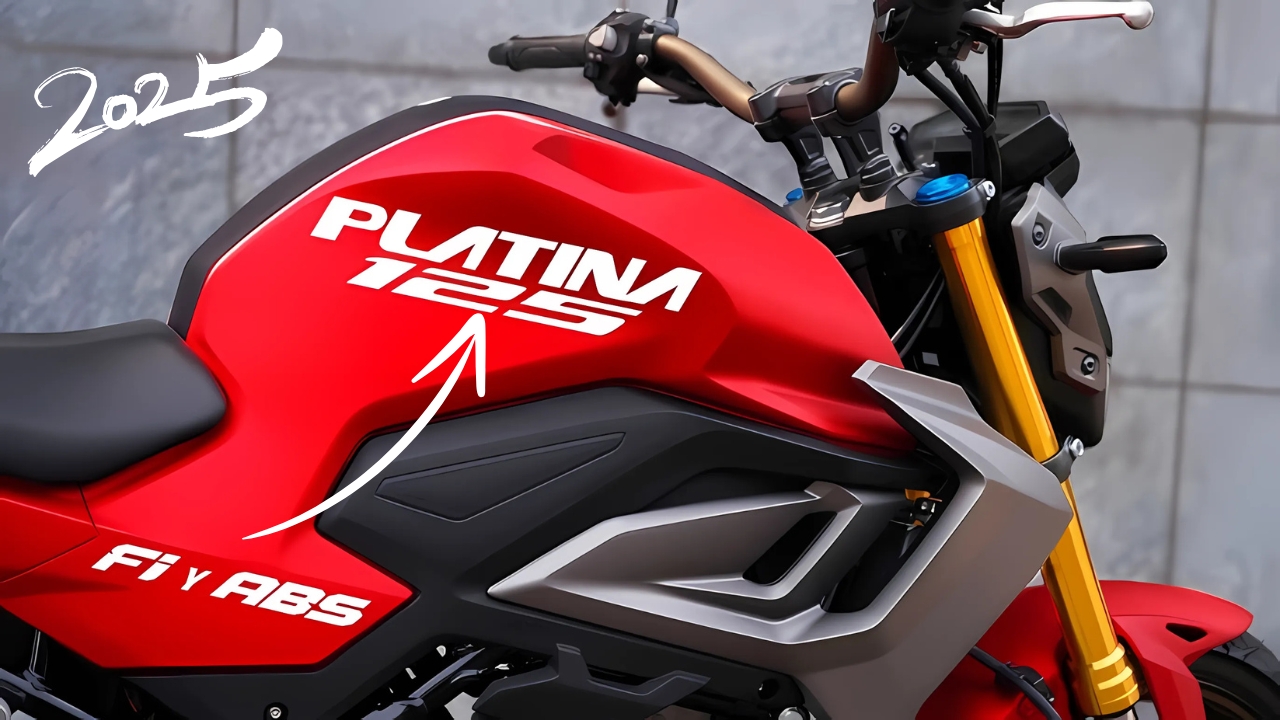Bajaj Platina 125- The Indian company Bajaj no longer produces the Bajaj Platina 125, marking the end of an era for one of India’s most popular 125cc commuter motorcycles. DISCONTINUED Bike Discontinued in Dec, 2012, the Platina 125 remains a significant chapter in Bajaj’s commuter motorcycle legacy. Despite its discontinuation over a decade ago, the bike continues to generate interest in the used motorcycle market due to its reputation for reliability and fuel efficiency.
Historical Background & Legacy
The Bajaj Platina series has deep roots in the Indian motorcycle industry. The Platina series was based on the Bajaj Wind 125 and has a CT100 engine. It was released in April 2006 and has been very popular since then. The tremendous success of the initial 100cc model paved the way for the 125cc variant. At a price of Rs 36,000, which was very appealing, Bajaj sold 500,000 units in the first eight months. The 125cc version came out in September 2008, and more than 30,000 units were sold every month.
This exceptional sales performance demonstrated the strong market demand for affordable, reliable commuter motorcycles in India. The Platina brand became synonymous with comfort-oriented daily transportation, targeting consumers who prioritized ride quality and fuel efficiency over performance.
Technical Specifications & Engine Performance
Engine Configuration: It featured an air-cooled, 124.6 cc motor that generated 8.4 BHP at 7000 rpm and 10 Nm of torque at 4000 rpm. The engine specifications varied slightly across different model years, with some versions producing 8.5 Bhp at 7000 rpm and 10 Nm of torque at 4000 rpm.
Transmission & Drivetrain: The power plant is paired with a 5-speed transmission, providing adequate gear ratios for both city commuting and highway cruising. This 5-speed gearbox was a significant advantage over many competitors that offered only 4-speed transmissions.
Weight & Dimensions: As a result of its light weight (just 110 kg), the motorbike could be sprinted to a full speed in an instant and achieved high fuel efficiency. The lightweight construction contributed significantly to both performance and fuel economy.
Fuel System & Capacity: The bike has a reserve capacity that is 0.5 litres bigger, but it doesn’t matter much because the fuel tank capacity is still 13 litres. This generous fuel tank capacity provided excellent range for long-distance commuting.
Performance Characteristics
Fuel Efficiency: The Platina 125 was renowned for exceptional fuel efficiency. The Bajaj Platina is a reliable commuter bike, known for its excellent mileage of around 80 kmpl. Various sources report different mileage figures, with some claiming up to 80 kmpl under ideal conditions.
Speed & Acceleration: The vehicle offers a comfortable ride in urban areas and can go at speeds of up to 70 kilometres per hour (60 miles per hour). The bike can reach a maximum speed of 115 kph and features a comfortable seat height of 785 mm.
Urban Performance: The motorcycle excelled in city conditions, offering smooth acceleration from traffic lights and adequate power for overtaking in urban scenarios. The lightweight design made it easy to maneuver through congested traffic.
Design Philosophy & Comfort Features
Styling & Aesthetics: The Platina’s design was similar to the Bajaj Kawasaki Wind 125, which debuted in late 2003 but featured a more relaxed, upright seating position than its 100cc rivals. Visually, the motorcycle packed standard features, such as a single headlight unit integrated into a small cowl, a small windscreen, a one-piece dual seat with a passenger grab rail, a center stand, a single exhaust system with a muffler mounted on the right-hand side, and five-spoke alloy wheels.
Comfort Technology: It offers superior comfort with a soft seat and smooth suspension, making daily rides effortless. The comfort-oriented design was a key differentiator in the competitive commuter segment.
Practical Features: Bright headlights, a “Ride Control” switch, and a “Maintenance-Free” 12V 5Ah battery will give you peace of mind. These practical features enhanced the overall ownership experience.
Market Positioning & Competition
Pricing Strategy: The last price of the commuter motorcycle was INR 42,000, although the Discover 125 has since replaced it in the marketplace. This competitive pricing made it accessible to a broad range of consumers in the entry-level 125cc segment.
Competitive Landscape: In the Indian market, it competes with the Honda CB Shine, the Hero Super Splendor, the Hero Glamour, and any other 125 cc bikes. The Platina 125 held its own against these established competitors through its focus on comfort and fuel efficiency.
Current Platina Lineup (2025)
While the 125cc variant is discontinued, Bajaj continues to offer other Platina models:
Platina 100: The cheapest model under the series is Bajaj Platina 100 with 102cc engine generating 7.79 bhp of power, priced at Rs. 66,913.
Platina 110: Whereas the most expensive model is Bajaj Platina 110 with 115.45cc engine generating 8.48 bhp of power. The Bajaj Platina 110 ABS was the only sub-125cc motorcycle to get single-channel ABS as an option.
Used Market Availability
Secondary Market Pricing: The Bajaj Platina 125 price in India in the second-hand market ranges from Rs 18-35 thousand INR. You can get yourself a Platina in decent condition in the price range of 20-30 K in the second-hand market.
Buying Considerations: Make sure you test it thoroughly and verify papers before confirming the purchase. Due to the bike’s age, potential buyers should carefully inspect the engine condition, transmission smoothness, and overall maintenance history.
Owner Experience & Reliability
Long-term Ownership: User reviews consistently praise the Platina 125’s reliability and low maintenance requirements. Its low maintenance and fuel efficiency make it a perfect choice for budget-conscious riders seeking comfort and economy.
Maintenance Characteristics: The simple air-cooled engine design and conventional transmission made maintenance straightforward and affordable. Parts availability was excellent during its production years, though finding genuine parts may be challenging now.
Reasons for Discontinuation
The Platina 125 was discontinued as part of Bajaj’s strategy to streamline its product portfolio and focus on more modern platforms. The company shifted resources toward newer models like the Discover series and eventually introduced more advanced commuter motorcycles with better emissions compliance and updated technology.
Legacy & Impact
The Platina 125 played a crucial role in establishing Bajaj’s reputation in the 125cc commuter segment. Its success demonstrated that Indian consumers valued comfort and fuel efficiency over outright performance in their daily transportation needs. The motorcycle’s design philosophy influenced subsequent Bajaj commuter models, particularly in terms of rider comfort and practical features.
Industry Influence: The Platina series helped establish the template for comfort-oriented commuter motorcycles in India. Its emphasis on soft suspension, upright riding position, and long-distance comfort became standard expectations in the segment.
Conclusion
The Bajaj Platina 125 represents an important milestone in Indian motorcycle history. Despite being discontinued for over a decade, it remains remembered as a reliable, fuel-efficient, and comfortable commuter motorcycle that served thousands of Indian families faithfully. Its success laid the groundwork for modern commuter motorcycles and demonstrated the importance of understanding local market needs.
For those interested in experiencing this classic commuter, the used motorcycle market still offers opportunities to own a piece of Bajaj’s heritage. However, potential buyers should be prepared for the challenges of maintaining an older motorcycle, including parts availability and the need for more frequent servicing.
The Platina legacy continues through the current 100cc and 110cc variants, which maintain the core philosophy of comfort-oriented commuting that made the 125cc version so popular. While technology and emissions regulations have evolved, the fundamental appeal of practical, efficient, and comfortable daily transportation remains unchanged.










